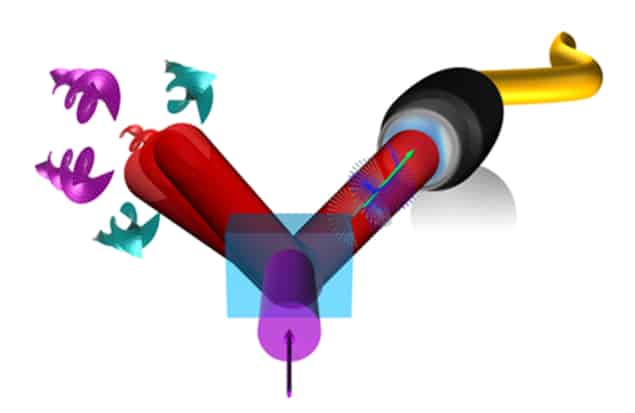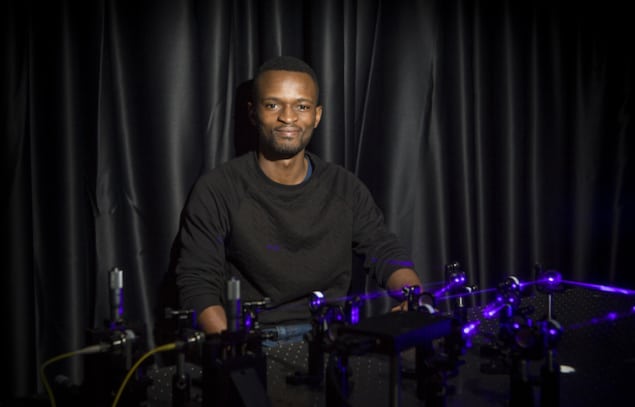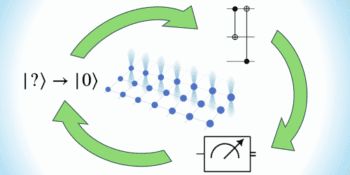
Researchers have transmitted multidimensional entangled photons across a record-breaking 250 metres of conventional single-mode optical fibre. This result from a team based in South Africa and China suggests that conventional or “legacy” fibre networks could be used as conduits for secure quantum optical communications, bringing the global quantum Internet a step closer to reality.
Information in quantum computers is stored in the form of quantum bits, or qubits, that exist in a so-called “superposition” of two states rather than as classical 0s and 1s. The quantum particles used to make qubits can also become “entangled”, meaning that they share a much closer relationship than classical physics allows. With an entangled pair of particles, knowing the state of one particle instantly reveals the state of the other – a phenomenon that allows information to be transmitted instantaneously between entangled particles, regardless of how far apart they are.

Transporting entangled photons
Because quantum systems are disrupted by the act of measuring them, third parties who try to eavesdrop on such quantum transmissions are foiled and cannot steal any information. This property makes quantum communications far more secure than today’s Internet, but also more sensitive to disturbances.
Over the past decade, researchers have succeeded in encoding quantum information in the spin angular momentum (or polarization state) of photons and transmitting this information via optical fibres. These states carry one qubit per photon, and they can be transported over long distances (more than 100 km) using conventional fibre technology.
However, all quantum particles – even simple ones like photons – have more than one inherent property or state. Being able to transport multiple states at the same time would be an important step forward for any quantum protocol, since it would give each photon a higher information capacity.
Researchers recently took an important step in this direction by simultaneously teleporting a photon’s polarization and its spatial twist pattern, or orbital angular momentum (OAM), to another photon some distance away. The two particles were entangled in both their spin and their OAM, forming a so-called hyper-entangled set.
Yet despite this crucial advance, quantum communication with a particle’s spatial modes is still in its infancy. In previous studies, the maximum reported transmission distance for multidimensional entangled photons was limited to less than one metre. Even then, the researchers had to use a specially-designed custom multimode fibre, rather than the ordinary single-mode fibres that make up the modern global communications network.
Single mode fibre transport
Researchers led by Jian Wang of Huazhong University of Science and Technology and Andrew Forbes of the University of the Witwatersrand say that they may have overcome this limitation. In their set-up, they entangle the polarization and the OAM of a photon pair, then pass one of the paired photons down an ordinary single-mode fibre while using the other photon to measure OAM patterns. The researchers did this using a holographic technique in which spatial light modulators (SLMs) display patterns that collapse the photon into a given state so it can be measured.

The quantum internet comes closer
By changing the interactions between the photon’s spin and its motion (its spin-orbit coupling), the researchers say they were able to read out all the OAM patterns produced, with each pattern representing a different entangled state. They also demonstrated that they could transfer the multidimensional entangled states across 250 m of single-mode fibre with high fidelity.
“Our research turns on its head the traditional assumption that custom, multimode fibre would be needed to transport entangled photons existing in multiple states,” Wang and Forbes report. “It essentially introduces the concept of communicating across legacy optical fibre networks with these multidimensional entangled states and brings together the benefits of existing quantum communication with polarized photons with that using patterns of light.”
The work is detailed in Science Advances.


